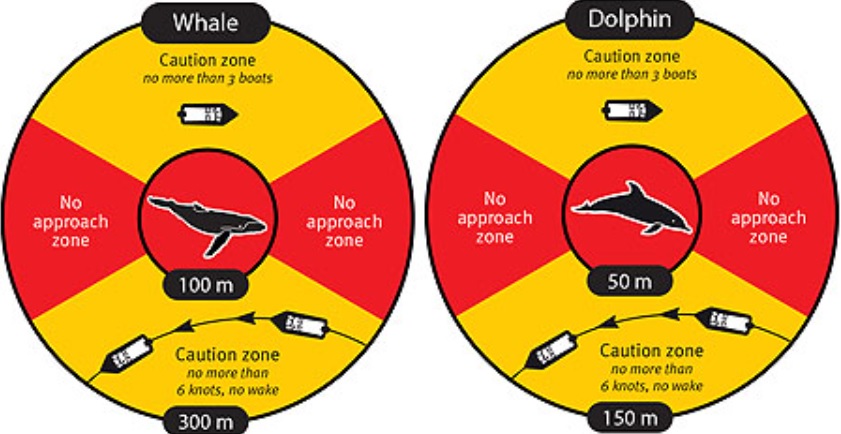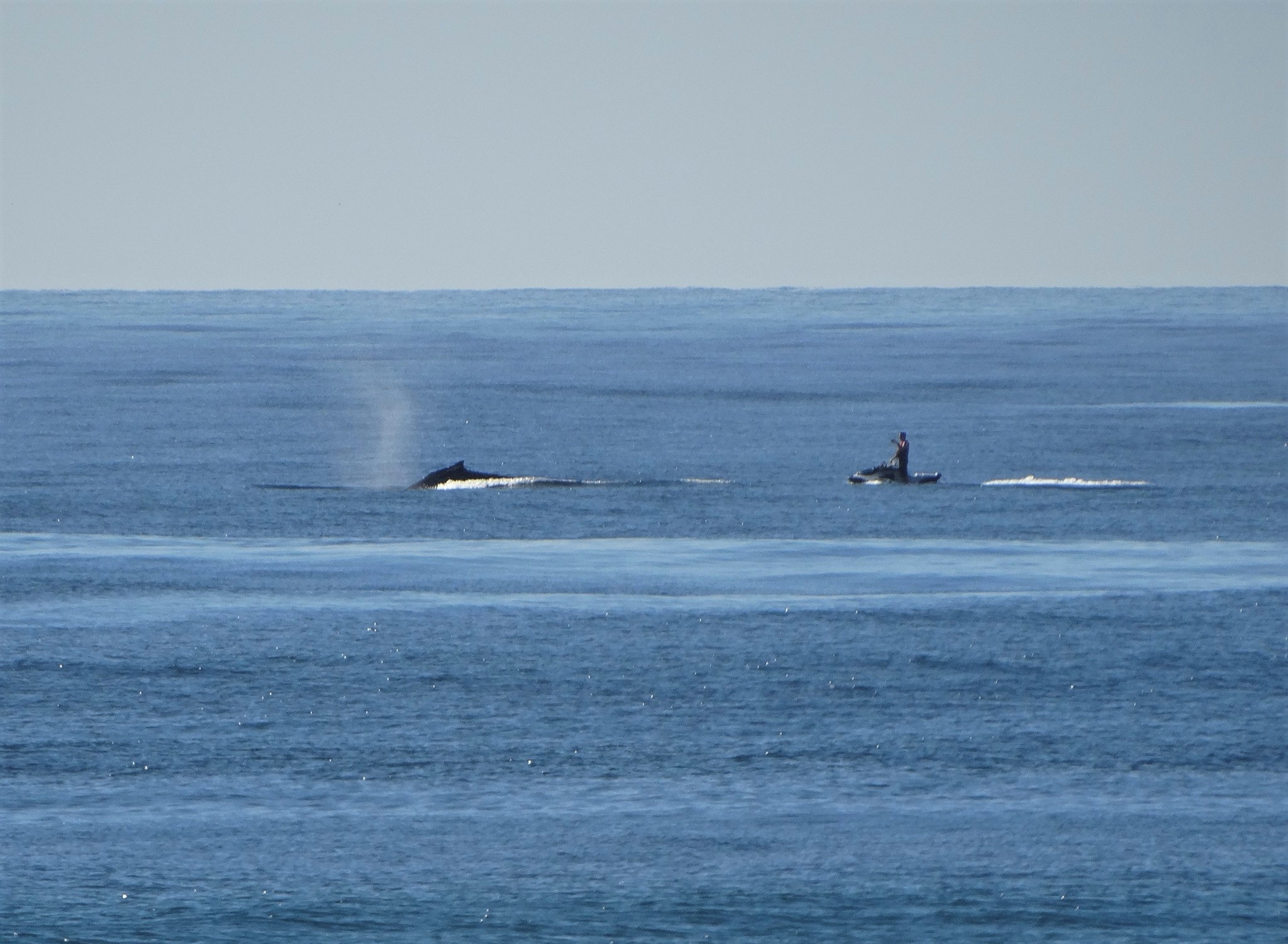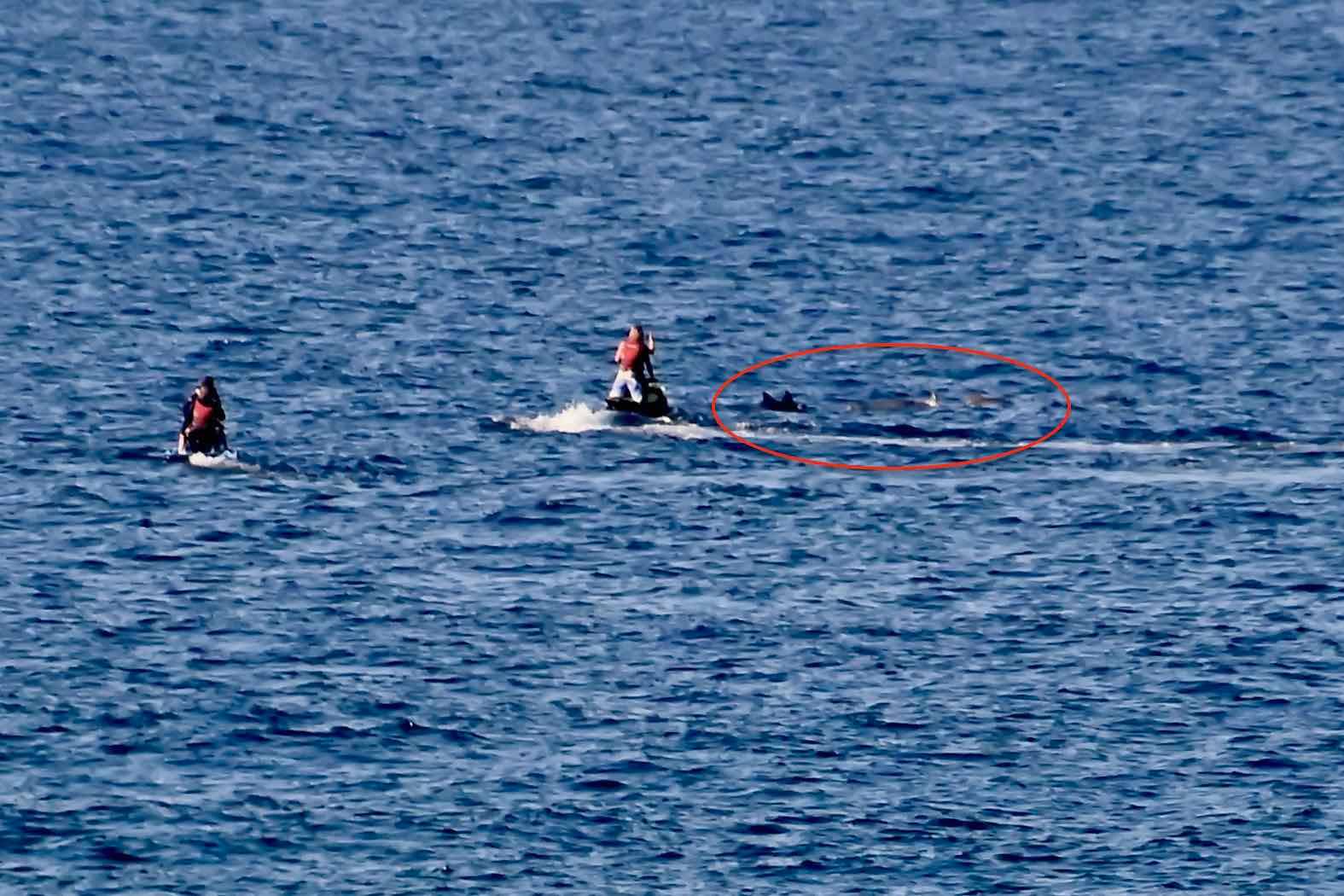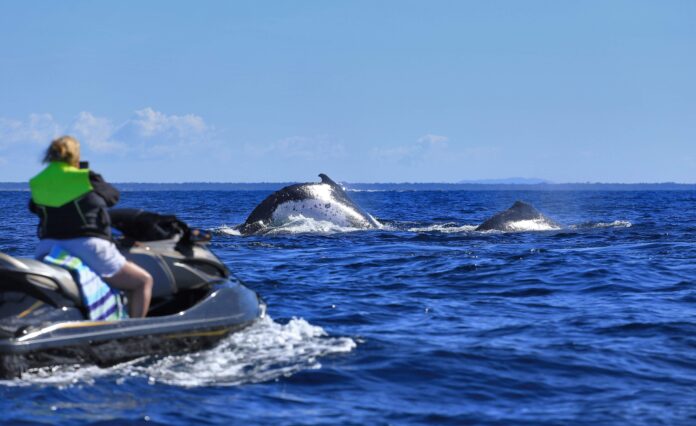Watercraft operators allegedly getting too close to whales and dolphins along the Sunshine Coast have sparked three official investigations and a warning from authorities.
Humpback whales are generally off the coast between late autumn and late spring for the seasonal migration, while dolphins can usually be spotted year-round.
Sightings of the creatures draw excitement from those lucky enough to have an encounter. But for safety reasons, laws are in place to determine how close people with watercraft can get to the mammals.
Coolum and North Shore Coast Care volunteer Tash Cassidy said there were numerous reports of people breaching the no-approach laws for whales and dolphins, this season.
For whales, the no-approach zone surrounds the animals for 100m and extends 300m in front of and behind them.
For dolphins, the no-approach zone surrounds the animals for 50m and extends 150m in front of and behind of them.
“People are approaching whales, wanting to get photos or get close to them,” Ms Cassidy said.
“Jet skis have actually been powering quite close and almost chasing the whales, which has been scaring them off as well.”

Ms Cassidy said there had been evidence of rules breaches at Peregian Beach, as well as around Noosa beaches.
“People have taken video footage and have been sending it to the DES, but the registration numbers of the boats or the jet ski need to be visible, or nothing can really be done,” she said.
“If you are using a jet ski or boat and are essentially chasing whales or dolphins to take photos, please obey the no-approach laws.”
Watercraft appearing too close to marine mammals at Noosa’s Hell’s Gate and Devil’s Kitchen, as well as Sunshine Beach, have also been reported on the Facebook page Whale Watchers and Nature Lovers, Sunshine Coast Queensland.
“There’s two jet skiers hassling whales for the last 20 minutes – (they’re) right on top of them,” one person posted while at Hell’s Gates.
Want more free local news? Follow Sunshine Coast News on Facebook, LinkedIn and Instagram.
A Department of Environment and Science spokesperson said reports had been received of jet skiers and other vessels allegedly breaching whale approach limits this season.
“We often see an increase in breaches in high-traffic vessel locations, such as offshore of the Noosa and Maroochy rivers,” the spokesperson said.
“Whale approach limits are in place to protect both the whales and the people on the jet skis.

“Jet skis must stay at least 300m from marine mammals. Other approach distances apply to other vessels and aircraft.”
“Jet skis can be unpredictable in their behaviour – they are fast and very manoeuvrable – which can increase the risk of collision with marine mammals and disturbance to their natural behaviour.
“Given their small size, jet skis can also be difficult for marine mammals to detect and avoid.
“Whales are enormous animals, and can inadvertently do a lot of damage to vessels, particularly small vessels such as jet skis. The number of breaches reported this year is similar to previous years.”
Related story: Whales ahoy! Coast welcomes gentle giants’ return
The spokesperson said there were at least three offences being investigated by DES wildlife officers.
Penalties for breaching approach distances range from an on-the-spot fine of $774, to a maximum penalty of more than $25,000.

The department has also received several reports of vessels colliding with whales this season.
“Vessels travelling at speed can also inflict serious damage to marine mammals, and we have seen some horrific injuries to both whales and dolphins in recent years from vessel strikes,” the spokesperson said.
To report approach distance breaches, and sick, injured, tangled or deceased whales, dolphins, dugongs or turtles, call the DES hotline on 1300 130 372.
Whale approach distances are legislated under the Nature Conservation (Animals) Regulation 2020, which is enforced by the DES.
For more information on approach distances, head here.
SUBSCRIBE here now for our FREE news feed, direct to your inbox daily.





